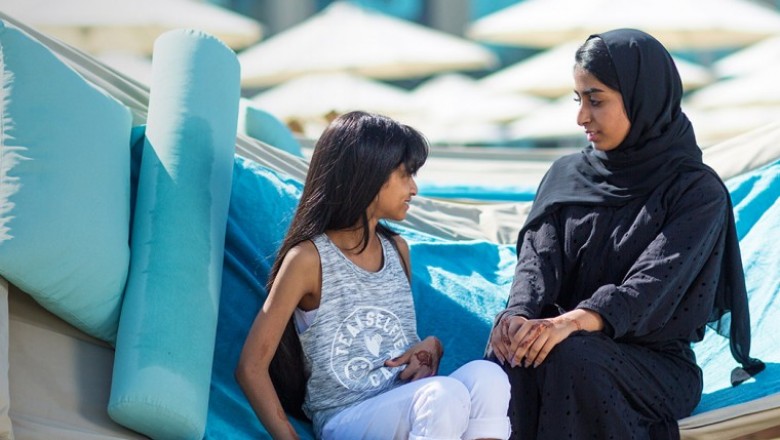

It stems from the struggle to survive in a harsh desert environment where the occasional traveller was the sole source of news, and where safety depended on the size and strength of one's family, tribe and clan.
The desert-dwelling Bedouins welcomed strangers with Arabic coffee (gahwa), infused with cardamom and saffron, and accompanied with sweet and sticky dates, a tradition that is still practiced today.
Your host will read your body language – if you keep your espresso-sized cup (finjaan) extended, he will refill it. If you don’t want a top-up, give the cup a small shake and he’ll whisk your cup away.
Emirati Cuisine
The UAE’s fishing and trading past means that the local cuisine is based on fish, both freshly caught and preserved, along with rice and spices such as saffron and turmeric introduced by centuries-old trading partners such as Persia and India. Meats such as chicken and lamb also feature heavily.
Dates are one of the most famed Middle Eastern delicacies. As one of the few crops that thrive naturally across the Arabian Peninsula, they have been cultivated in the area for around 5,000 years.
Meanwhile, common dishes from the Levant include shawarma (lamb or chicken carved from a spit and served in a pita), falafel, hummus, and tabbouleh.
National Dress
In general, the local population wears traditional dress in public, which is a symbol of pride and identity.
For men, this is the dishdasha or kandura: a white full-length shirt dress, which is worn with a white or red checked headdress, known as a ghutrah. This is secured with a black cord known as an agal.
Women wear the black abaya; a long, loose robe that covers their normal clothes, plus a headscarf called a sheyla. Some women also wear a thin black veil covering their face.



















Facebook Conversations
Disqus Conversations